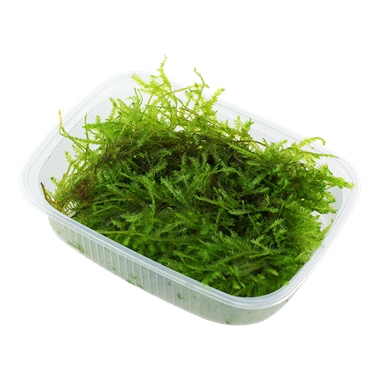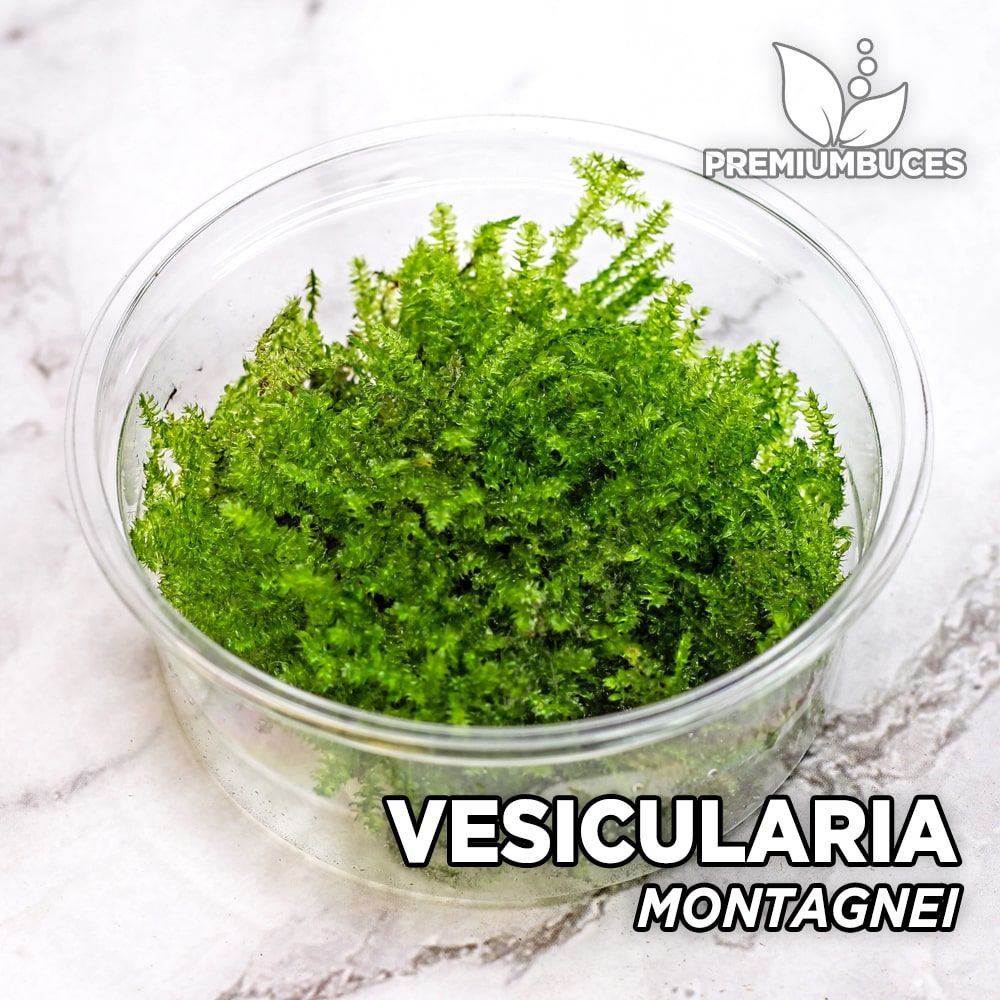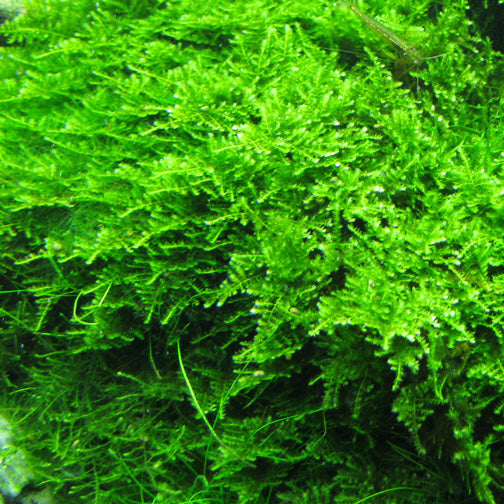Vesicularia Montagnei, commonly known as Christmas Moss, is a popular aquatic plant in aquascaping. It is appreciated for its lush, green appearance and ease of care.
Christmas Moss is an ideal choice for aquariums due to its hardy nature and low maintenance requirements. This moss can thrive in various water conditions and does not demand high light or CO2 levels. Its ability to attach to rocks, driftwood, and other surfaces makes it versatile for creating natural-looking underwater landscapes.
The plant also provides excellent hiding spots for fish and shrimp, enhancing the overall ecosystem of the tank. Easy to propagate, Christmas Moss can be trimmed and replanted, ensuring continuous growth. Its aesthetic appeal and functional benefits make it a favorite among aquarists.

Credit: tropica.com
Introduction To Christmas Moss
Christmas Moss, scientifically known as Vesicularia Montagnei, is a popular aquatic plant. It is loved for its lush, green appearance. This moss is commonly used in aquariums and terrariums. It is easy to care for and adds beauty to any setup. Let’s dive into its origins and unique characteristics.
Origins And Habitat
Christmas Moss originates from Southeast Asia. It thrives in tropical climates. You can find it in countries like Indonesia, Malaysia, and the Philippines. This moss grows naturally in shaded, moist areas. It often clings to rocks, tree trunks, and riverbanks. The natural habitat provides it with plenty of humidity and moderate light.
Unique Characteristics
One of the most striking features of Christmas Moss is its dense, bushy growth. The plant has a unique, layered pattern that resembles a Christmas tree. This is why it is named Christmas Moss. The fronds are small, delicate, and bright green.
Here are some unique characteristics of Christmas Moss:
- Growth Pattern: Creates dense, bushy mats.
- Light Requirements: Thrives in low to moderate light.
- Water Conditions: Prefers clean, slightly acidic water (pH 5.0-7.5).
- Temperature Range: Grows best between 20°C to 28°C (68°F to 82°F).
- Attachment Ability: Can attach to various surfaces like rocks and driftwood.
This moss also helps improve water quality in aquariums. It absorbs excess nutrients and provides shelter for small aquatic creatures.
| Characteristic | Details |
|---|---|
| Growth Pattern | Dense, bushy mats |
| Light Requirements | Low to moderate light |
| Water Conditions | Clean, slightly acidic (pH 5.0-7.5) |
| Temperature Range | 20°C to 28°C (68°F to 82°F) |
| Attachment Ability | Rocks, driftwood |
Christmas Moss is a versatile plant. It enhances the beauty of any aquatic environment. Its unique characteristics make it a favorite among aquarists.
Benefits Of Christmas Moss
Vesicularia Montagnei, known as Christmas Moss, is a popular aquarium plant. It offers many benefits for aquascaping enthusiasts. From enhancing tank aesthetics to improving water quality, Christmas Moss is a versatile addition to any aquarium.
Aquascaping Aesthetics
Christmas Moss adds a natural and lush appearance to aquariums. Its unique, tree-like structure resembles tiny pine branches. This gives it a festive look, perfect for creating beautiful underwater landscapes.
You can use it to create stunning moss walls or carpets. Its versatility allows for creative aquascaping designs. This makes Christmas Moss a favorite among aquarists.
Here are some ways to use Christmas Moss in aquascaping:
- Attach it to driftwood or rocks
- Create moss-covered backgrounds
- Form moss carpets for a green floor
Water Quality Improvement
Christmas Moss helps improve water quality in aquariums. It absorbs excess nutrients, reducing algae growth. This keeps the tank clean and healthy for fish and other aquatic life.
The moss also provides a habitat for beneficial bacteria. These bacteria help break down waste, maintaining a balanced ecosystem. This makes Christmas Moss an excellent choice for any tank.
Benefits of Christmas Moss for water quality:
| Benefit | Description |
|---|---|
| Absorbs nutrients | Reduces algae growth |
| Supports beneficial bacteria | Helps break down waste |
| Improves water clarity | Makes the tank look clearer |
Ideal Tank Conditions
Creating the perfect tank conditions for Vesicularia Montagnei Christmas Moss ensures vibrant growth and health. This moss thrives in specific water parameters and lighting conditions, making it crucial to understand and maintain these requirements.
Optimal Water Parameters
Maintaining the right water parameters is essential for the well-being of Christmas Moss. Below is a table summarizing the ideal conditions:
| Parameter | Range |
|---|---|
| Temperature | 68-77°F (20-25°C) |
| pH Level | 6.0-7.5 |
| Water Hardness | 2-15 dGH |
Christmas Moss prefers a temperature between 68-77°F (20-25°C). The pH level should range from 6.0 to 7.5. Water hardness must be between 2-15 dGH.
Lighting Requirements
Proper lighting is crucial for the growth of Vesicularia Montagnei Christmas Moss. Here are the key points:
- Light Intensity: Medium to high
- Duration: 8-10 hours per day
Use medium to high light intensity to promote healthy growth. Ensure a lighting duration of 8-10 hours daily.
By maintaining these conditions, your Christmas Moss will flourish, adding beauty to your aquarium.
Planting And Propagation
Understanding the planting and propagation of Vesicularia Montagnei Christmas Moss is crucial. This moss enhances your aquarium’s beauty. It also provides a habitat for aquatic life. Here’s a detailed guide to help you with the process.
Initial Setup
Begin with choosing the right environment. Christmas Moss thrives in aquariums with low to moderate lighting. Ensure the water temperature is between 20-28°C (68-82°F). Maintain a pH level of 5.0-7.5.
| Parameter | Ideal Range |
|---|---|
| Lighting | Low to Moderate |
| Temperature | 20-28°C (68-82°F) |
| pH Level | 5.0-7.5 |
Attach the moss to driftwood, rocks, or substrate. Use fishing line or thread to secure it. Within weeks, the moss will anchor itself. Trim it regularly to maintain its shape.
Propagation Techniques
Christmas Moss propagates through fragmentation. This is a simple method. Follow these steps:
- Take healthy moss fragments.
- Attach each fragment to a new surface.
- Secure the fragments with thread or netting.
- Place them in a suitable environment.
Ensure the new fragments receive ample light and nutrients. Within a few weeks, new growth will appear. This indicates successful propagation. Continue to monitor and maintain water conditions.
Maintenance Tips
Maintaining your Vesicularia Montagnei Christmas Moss ensures it thrives and enhances your aquarium’s beauty. Follow these tips to keep your moss healthy and vibrant.
Trimming And Pruning
Regular trimming and pruning are essential for the health of Christmas Moss. Use sharp scissors to trim the moss.
Cut the moss evenly to maintain its shape. Trim every 2-3 weeks for best results.
Remove any brown or decaying parts to promote healthy growth. This also helps to prevent debris buildup.
Preventing Algae Growth
Algae can compete with Christmas Moss for nutrients. Keep algae in check to ensure moss health.
Maintain a proper lighting schedule. Too much light can promote algae growth. Use a timer to control light exposure.
Monitor nutrient levels. Excess nutrients can lead to algae problems. Use fertilizers sparingly and test water regularly.
Introduce algae-eating species. Fish and snails can help control algae naturally.
Perform regular water changes. This helps to keep nutrient levels balanced and reduces algae growth.
Common Issues
Vesicularia Montagnei, also known as Christmas Moss, is a popular aquatic plant. Despite its popularity, it can face several common issues. These problems can affect its growth and appearance. Understanding these issues can help you maintain a healthy moss.
Yellowing Leaves
Yellowing leaves are a frequent problem in Christmas Moss. This issue often indicates a deficiency in nutrients or poor water quality.
- Insufficient Lighting: Christmas Moss needs moderate light. Too little light can cause yellowing.
- Low Nutrients: Lack of essential nutrients like iron and nitrogen can lead to yellow leaves.
- Improper Water Conditions: High levels of nitrates or phosphates may harm the plant.
Regular water changes and proper fertilization can prevent yellowing. Ensure the lighting is neither too intense nor too dim.
Slow Growth
Slow growth in Christmas Moss can be frustrating. Various factors contribute to this issue.
| Cause | Explanation |
|---|---|
| Low CO2 Levels | Carbon dioxide is crucial for plant growth. Low levels can hinder growth. |
| Inadequate Light | Insufficient light slows down photosynthesis, affecting growth. |
| Poor Water Quality | Contaminated water can stunt the moss’s growth. |
To boost growth, consider CO2 supplementation. Maintain optimal light and water conditions.
Companion Plants
Choosing the right companion plants for your Vesicularia Montagnei Christmas Moss can enhance its beauty and health. Some plants pair well, while others may compete for resources. Learn about the best pairings and which species to avoid.
Best Plant Pairings
The best plants to pair with Christmas Moss include those that thrive in similar conditions. Here are some great choices:
- Java Fern (Microsorum pteropus) – Low light, slow growth.
- Anubias (Anubias barteri) – Shade-loving, hardy.
- Cryptocoryne (Cryptocoryne wendtii) – Adaptable, slow-growing.
- Java Moss (Taxiphyllum barbieri) – Similar requirements, easy care.
These plants share similar water and light needs with Christmas Moss. They grow well together without competing for resources. Their slow growth rates also complement the moss’s delicate texture.
Avoiding Incompatible Species
Some plants do not pair well with Christmas Moss. Here are species to avoid:
- Amazon Sword (Echinodorus bleheri) – High light, fast growth.
- Hornwort (Ceratophyllum demersum) – Rapid growth, resource-heavy.
- Duckweed (Lemna minor) – Blocks light, invasive.
These species can overshadow or outcompete Christmas Moss. They require different care and can disrupt the balance in your tank. Stick to compatible plants for a harmonious and healthy environment.
Creative Aquascaping Ideas
Vesicularia Montagnei, also known as Christmas Moss, brings life to any aquarium. It’s versatile and can be used in many creative ways. Here are some exciting aquascaping ideas to get you started.
Themed Aquascapes
Creating a themed aquascape can be very rewarding. Christmas Moss is perfect for this. Here are a few themes to consider:
| Theme | Description |
|---|---|
| Forest Scene | Use moss to mimic forest floors and tree trunks. |
| Underwater Garden | Combine moss with colorful plants for a vibrant look. |
| Rocky Terrain | Cover rocks with moss for a natural, rugged appearance. |
Using Moss In Aquascape Design
Christmas Moss can be used in many ways. Here are some ideas:
- Attach moss to driftwood to create a natural look.
- Use moss as a carpet at the bottom of the tank.
- Wrap moss around rocks for a green, lush effect.
To attach moss, use thread or glue. Ensure it is aquarium-safe. Christmas Moss grows quickly and needs trimming. This helps it stay healthy and beautiful.
Explore these ideas and create a stunning aquascape. Christmas Moss is easy to use and very rewarding.
Advanced Techniques
Vesicularia Montagnei, or Christmas Moss, is a favorite among aquarists. Its versatile growth patterns make it ideal for advanced aquascaping techniques. This section explores advanced methods for creating stunning aquatic displays with Christmas Moss.
Creating Moss Walls
Building a moss wall transforms your aquarium into a lush, green landscape. Follow these steps:
- Gather materials: mesh, suction cups, and fishing line.
- Attach the mesh: Secure the mesh to the back of the tank using suction cups.
- Prepare the moss: Clean and trim the Christmas Moss.
- Tie the moss: Use fishing line to attach the moss to the mesh.
- Maintain: Trim regularly to promote even growth.
A moss wall provides a natural habitat for small fish and shrimp. It also enhances the aesthetic appeal of your tank.
Moss Trees And Carpets
Creating moss trees adds a whimsical touch to your aquarium. Follow these steps:
- Select a branch: Choose a driftwood branch as the tree base.
- Attach the moss: Use fishing line or glue to secure the moss to the branch.
- Shape the moss: Trim the moss to resemble tree foliage.
- Place in the tank: Position the tree securely in the substrate.
Moss trees create a magical, underwater forest look.
To create a moss carpet, follow these steps:
- Prepare the substrate: Ensure it is clean and nutrient-rich.
- Plant the moss: Spread the Christmas Moss evenly across the substrate.
- Anchor the moss: Use small stones or mesh to keep the moss in place.
- Encourage growth: Maintain optimal light and CO2 levels.
A moss carpet provides a soft, natural floor for your tank. It also helps in nutrient absorption and water filtration.
| Technique | Materials Needed | Benefits |
|---|---|---|
| Moss Walls | Mesh, suction cups, fishing line | Natural habitat, aesthetic appeal |
| Moss Trees | Driftwood, fishing line or glue | Whimsical, magical look |
| Moss Carpets | Substrate, small stones or mesh | Soft floor, nutrient absorption |
Using these advanced techniques, you can transform your aquarium into a vibrant underwater paradise with Christmas Moss.

Credit: www.premiumbuces.com

Credit: marcusfishtanks.com
Frequently Asked Questions
What Is Vesicularia Montagnei Christmas Moss?
Vesicularia Montagnei Christmas Moss is an aquatic plant. It’s popular in aquariums for its lush, green appearance. It’s ideal for both beginners and experienced aquarists.
How Do You Care For Christmas Moss?
Caring for Christmas Moss is simple. Provide low to moderate light. Maintain a temperature between 68-82°F. Prune regularly to promote healthy growth.
Can Christmas Moss Grow In Low Light?
Yes, Christmas Moss can grow in low light. It thrives in low to moderate light conditions. This makes it suitable for a variety of aquariums.
Is Christmas Moss Good For Aquariums?
Yes, Christmas Moss is excellent for aquariums. It provides shelter for small fish and shrimp. It also helps improve water quality by absorbing nitrates.
Conclusion
Vesicularia Montagnei Christmas Moss is a stunning addition to any aquascape. Its vibrant green hues create a natural, serene environment. Easy to maintain, it suits beginners and experts alike. Enhance your tank’s beauty with this versatile plant, and watch your aquatic setup thrive.
Embrace the elegance of Christmas Moss today.